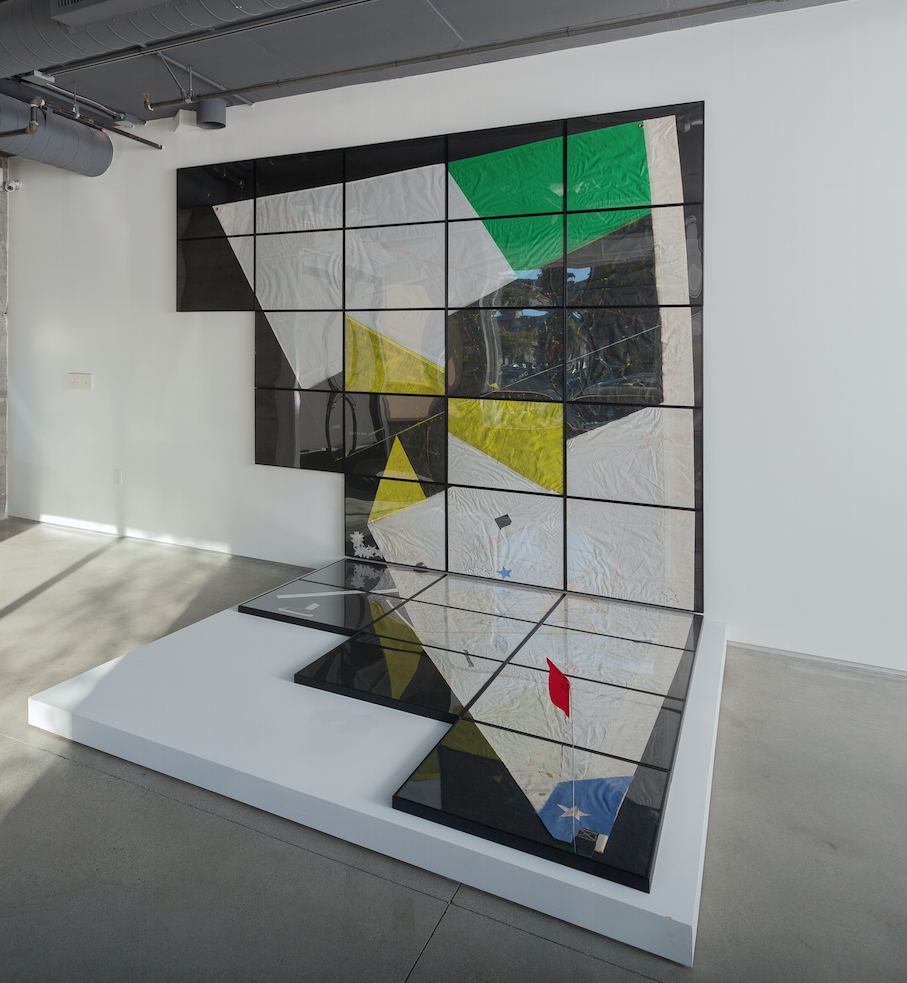
© » KADIST
Enrique Ramirez
Ramirez’s The International Sail is the fifth in a series that features an upside-down worn out, mended and fragmented boat sail. These works epitomize the idea of perpetual movement and migration while carrying a deep personal meaning in the creative process, as the artist’s father himself, still living in Chile, mends and sends the sails to his son, living in Europe. The reversed position of the sail recalls both the shape of South America itself and the Eurocentric view that in the Southern Hemisphere, everything is “upside-down.” The stitches themselves create an illusion of an alternative political geography, and the framed-cuts impose a cartographic grid.

© » KADIST
Enrique Ramirez
Enrique Ramirez’s La Memoria Verde is a work of poetry, politics, and memory created in response to the curatorial statement for the 13th Havana Biennial in 2019, The Construction of the Possible . Other well known works by Ramirez feature the movement and endless symbolism of the sea—like the simultaneous engagement and retreat of the tide—but La Memoria Verde takes the land, plant life, and its human inhabitants as its subject. The film begins with a soft, green, algae-like image that waxes and wanes in focus, then gives way to swaying treetops blowing in a soft wind.

© » KADIST
Enrique Ramirez
In Un Hombre que Camina (A Man Walking) (2011-2014), the sense of rhythm and timing is overpowered by the colossal sense of timelessness of this peculiar place. Shot in Uyuni, Bolivia, the film depcits world’s largest salt flat, a site that sits in a mountainous region at over twelve thousand feet above sea level. Ramirez’s work is deeply invested in the loss of regional identity, and the anachronistic dress of his “modern-day shaman” in the film is meant to reconcile the historical and cultural gaps between tribal traditions of a specific time and place and the all-too-prevalent homogeneity brought on by advanced capitalism.

© » KADIST
Naufus Ramírez-Figueroa
In Guardian 2 Naufus Ramírez Figueroa explores the historical memory and political reality of the ruins of Kawinal, an archeological site of postclassic Mayan culture that was flooded in order to construct the hydroelectric dam of Chixoy in 1975 in a supposed effort to bring electricity to the country. However, the reality was that the communities living in the area faced the swamping of their lands and properties, and endured the loss of their sacred sites. Those who refused to relocate became the victims—many of which were women and children—of what came to be known as the 1982 massacre of Río Negro at the hands of the military, the spectral traces of which still pervade behind the natural and cultural landscape of the region.

© » KADIST
Naufus Ramírez-Figueroa
Naufus Ramírez-Figueroa’s performance Illusion of Matter establishes a dream state through a composition of motifs that were drawn from the artist’s childhood memories. Ramírez-Figueroa recreated the components of the dream as giant props made out of polystyrene, and set in a colorful yellow and orange mise-en-scene. Throughout the performance, the props and set are activated and demolished by children under the artist’s direction.
Enrique Ramirez
- year born: 1979
- gender: male
- nationality: Chilean
- home town: Santiago, Chile